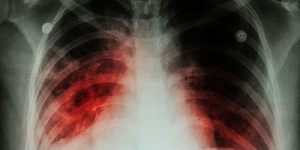
Abstract
Introduction: Rhinovirus (RV) is the most common cause of respiratory exacerbations in patients with asthma and chronic obstructive lung disease (COPD). Exacerbations due to RV constitute the major cause of morbidity in these patients. In healthy subjects, RV infections are predominantly mild and self-limited. In cell cultures, RV infections are associated with less cytotoxicity compared to other viruses such as influenza or respiratory syncytial virus. Our aim was to study the early stages of RV infection in primary human ciliated cultures and determine whether RV impacts on the function of cilia.
Methods: Ciliated epithelial cell cultures were infected with RV 16 for up to 7 days. Cilia were videoed using a high speed digital camera. Apical fluid was removed for evaluation of cytokine and chemokine response before and after infection.
Results: Ciliary dyskinesia significantly (P<0.05) increased within 24h of infection of COPD cells and after 48h in healthy cells. Ciliary beat frequency was unaffected by RV infection of healthy cells, but decreased cultures from COPD patients. This corresponded with a decrease in transepithelial resistance which remained low in COPD cultures, but returned to control levels in healthy cultures by day 7.
Conclusion: This study highlights the impact of RV on ciliary function in COPD patients and underscores the need to explore the role of ciliated cells in RV infection and subsequent exacerbation of disease.














